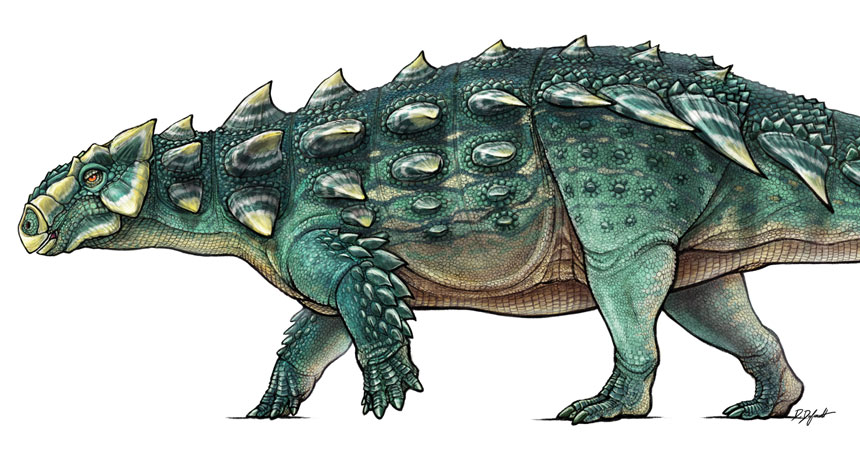New dinosaur resurrects a demon from Ghostbusters
Found in Montana, the skeleton is the most complete ankylosaur unearthed to date

DEMON DINO An armored dinosaur’s skull suggests that its face resembled that of a demon in Ghostbusters, so the researchers named it Zuul crurivastator. But the dino (ilustrated) was a plant eater, not a predator.
DANIELLE DUFAULT/© ROYAL ONTARIO MUSEUM